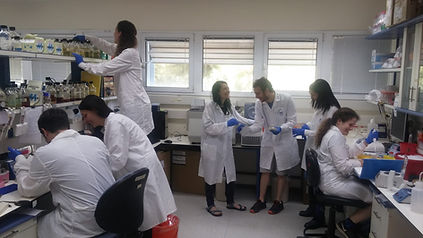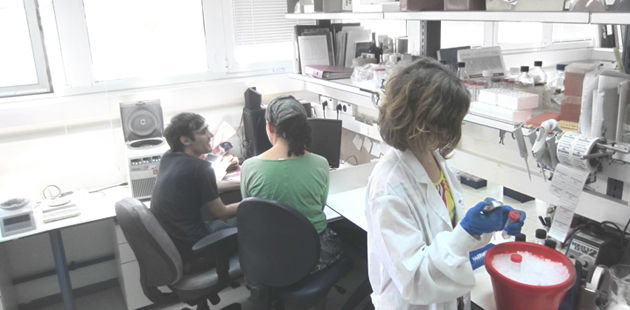Naama Barkai Lab
Department of Molecular Genetics
Weizmann Institute of Science


Principles of gene regulation:
The roles of disordered protein regions
Cells have a remarkable capacity to rapidly alter their transcriptional program during development or adaptation to changing conditions. Transcription factors (TFs) are key to this process; they bind to specific gene regulatory regions and induce (or repress) expression upon activation. While we know much about gene expression regulation, fundamental questions remain and lie at the heart of our research:
How do TFs specifically recognize their short binding sites (6-11 bases) within the vast, billion-base pair genome?
How can TFs locate these binding sites rapidly, within minutes of activation?
Theory and experiments demonstrate that the paradigm of a small, structured DNA binding domain in TFs is not sufficient alone for these attributes. Instead, much of the information lies in Intrinsically Disordered Regions (IDRs) which are abundant within TFs. We aim to elucidate the molecular code, or grammar, that enables specific genome-binding selection by IDRs in TFs.
Featured Article
February
2025
Intrinsically disordered regions as facilitators of the transcription factor target search
Felix Jonas, Yoav Navon, Naama Barkai
Nature Reviews Genetics (2025) | PDF
Transcription factors (TFs) contribute to organismal development and function by regulating gene expression. Despite decades of research, the factors determining the specificity and speed at which eukaryotic TFs detect their target binding sites remain poorly understood. Recent studies have pointed to intrinsically disordered regions (IDRs) within TFs as key regulators of the process by which TFs find their target sites on DNA (the TF target search). However, IDRs are challenging to study because they can confer specificity despite low sequence complexity and can be functionally conserved despite rapid sequence divergence. Nevertheless, emerging computational and experimental approaches are beginning to elucidate the sequence–function relationship within the IDRs of TFs. Additional insights are informing potential mechanisms underlying the IDR-directed search for the DNA targets of TFs, including incorporation into biomolecular condensates, facilitating TF co-localization, and the hypothesis that IDRs recognize and directly interact with specific genomic regions.




